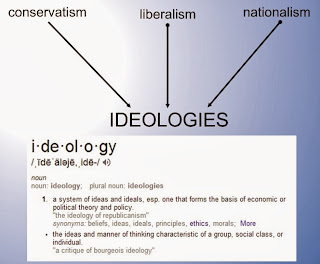Bloom's Taxonomy for Web 2.0
Another great discovery from my PLN on Twitter! Thanks to Eric Sheninger (NHMS_Principal)
Check out this link! It is an article that adapts Bloom's Taxonomy to Web 2.0. the author, Andrew Churches, has an award winning wiki called Educational Origami. His work is impressive. About halfway down the page, there is a great flowchart that applies higher order thinking to web 2.0 projects and activities.
The rest of the article breaks down what the verbs in the chart mean and how they work with these higher (or lower) order thinking skills. In each lesson and project I design for my students, I try to make sure that I hit at least one of the top three categories. It's hard to do every day in every lesson, but this chart is inspiring!
A few stand-outs:
Tagging and Searching = Even though Churches classifies these under Remembering, which is a lower order thinking skill, I like how tagging forces students to choose one-word key ideas to identify their images, podcasts, and blogs. Similarly, searching using Google, Alta Vista, or some other engine requires them to narrow their question to a few key terms. This process of simplification really helps kids understand exactly what they are learning.
Annotating = Identifying and evaluating resources is important. After facilitating a few research projects already this year, it has become increasingly evident that we think our students know more about the Internet than they really do. I had honors sophomores submitting About.com as a source for they National History Day projects, even after we had lengthy discussions about the importance of using scholarly sources.
Publishing = Churches notes, "whether via the web or from home computers, publishing in text, media or digital formats is increasing. Again this requires a huge overview of not only the content being published, but the process and product." This is the biggest reason we are in the midst of a Project Based Learning initiative at Reading Public Schools. When our students are instructed to publish their work to the web or to other classes, they should hold themselves to a higher standard. They need to conduct research using a wide range of sources, they need to be mindful of copyright restrictions when pulling images from the Internet, and they need to report the information in an organized and accurate way. Of course, if we could get them to work this way for every project, it would be great. But a PBL assignment is a great start.
Perhaps all teachers should take a look at this NEW Bloom's Taxonomy flow chart every time they tweek an old lesson or design a new one.
Check out this link! It is an article that adapts Bloom's Taxonomy to Web 2.0. the author, Andrew Churches, has an award winning wiki called Educational Origami. His work is impressive. About halfway down the page, there is a great flowchart that applies higher order thinking to web 2.0 projects and activities.

The rest of the article breaks down what the verbs in the chart mean and how they work with these higher (or lower) order thinking skills. In each lesson and project I design for my students, I try to make sure that I hit at least one of the top three categories. It's hard to do every day in every lesson, but this chart is inspiring!
A few stand-outs:
Tagging and Searching = Even though Churches classifies these under Remembering, which is a lower order thinking skill, I like how tagging forces students to choose one-word key ideas to identify their images, podcasts, and blogs. Similarly, searching using Google, Alta Vista, or some other engine requires them to narrow their question to a few key terms. This process of simplification really helps kids understand exactly what they are learning.
Annotating = Identifying and evaluating resources is important. After facilitating a few research projects already this year, it has become increasingly evident that we think our students know more about the Internet than they really do. I had honors sophomores submitting About.com as a source for they National History Day projects, even after we had lengthy discussions about the importance of using scholarly sources.
Publishing = Churches notes, "whether via the web or from home computers, publishing in text, media or digital formats is increasing. Again this requires a huge overview of not only the content being published, but the process and product." This is the biggest reason we are in the midst of a Project Based Learning initiative at Reading Public Schools. When our students are instructed to publish their work to the web or to other classes, they should hold themselves to a higher standard. They need to conduct research using a wide range of sources, they need to be mindful of copyright restrictions when pulling images from the Internet, and they need to report the information in an organized and accurate way. Of course, if we could get them to work this way for every project, it would be great. But a PBL assignment is a great start.
Perhaps all teachers should take a look at this NEW Bloom's Taxonomy flow chart every time they tweek an old lesson or design a new one.


.jpg)
Comments
Post a Comment